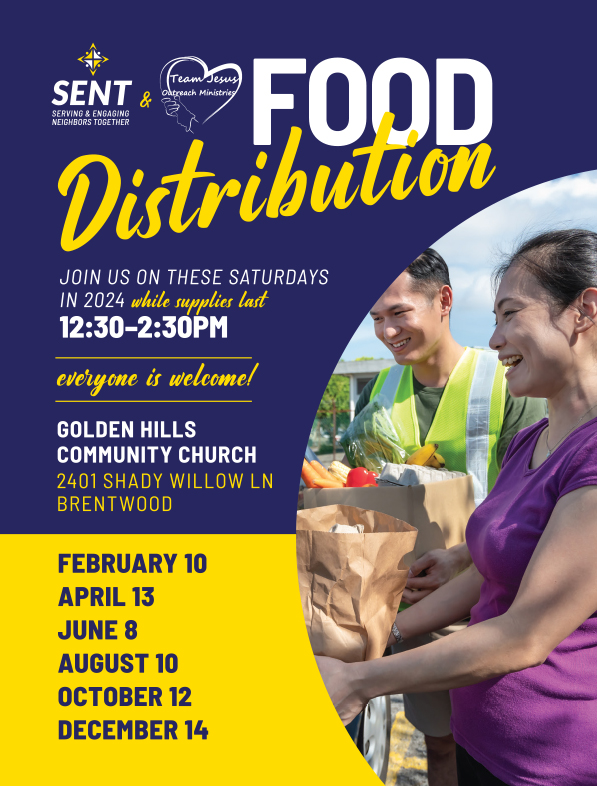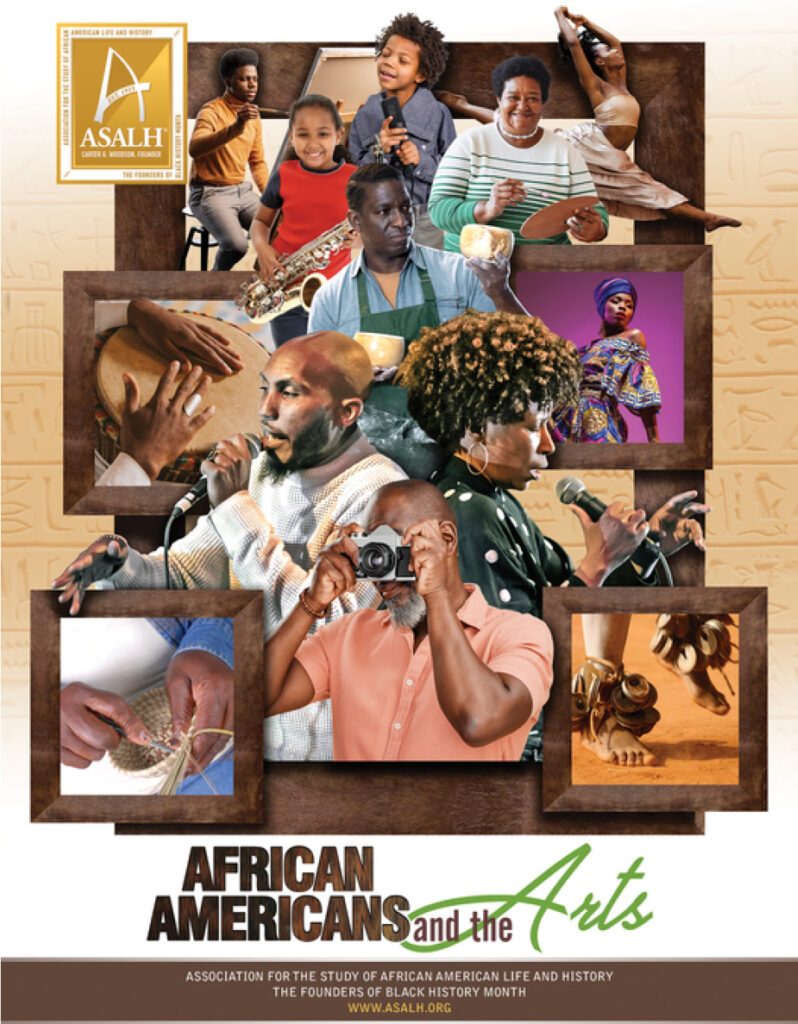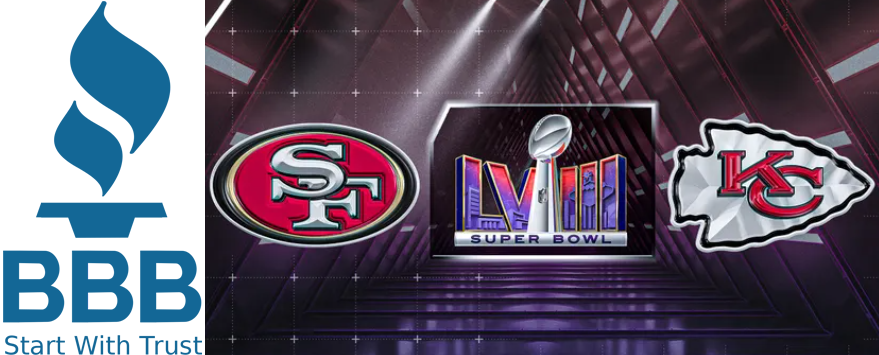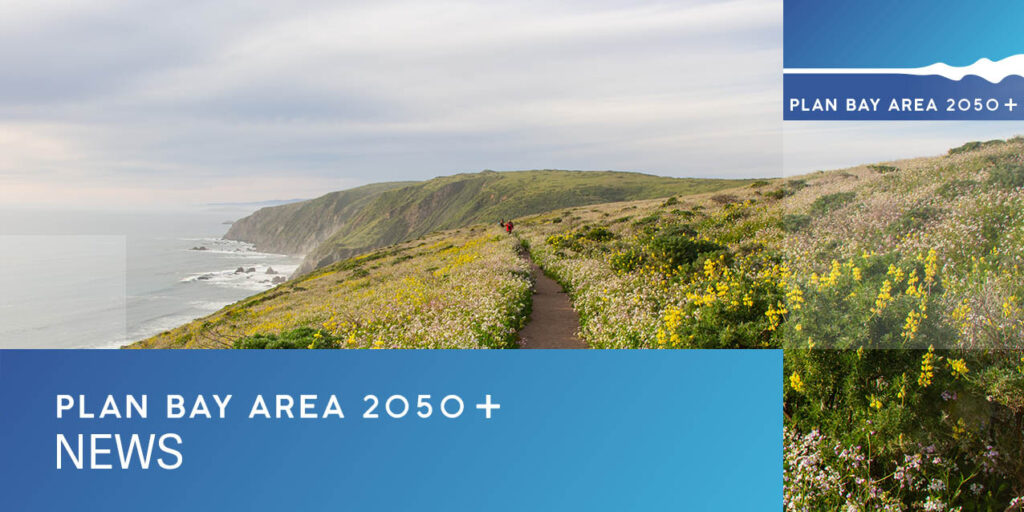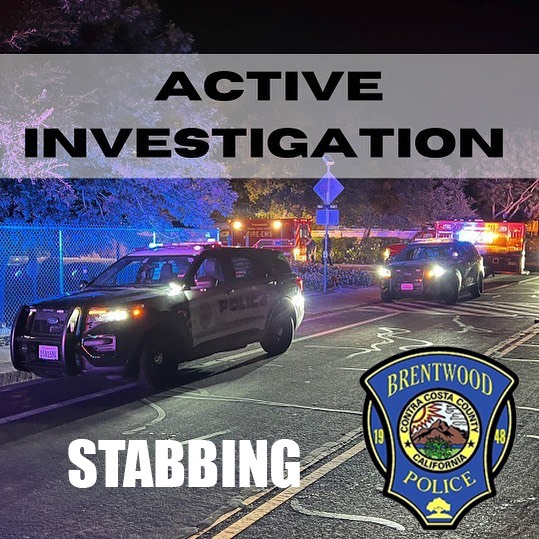By Monica Velez, EdSource – Republished with permission
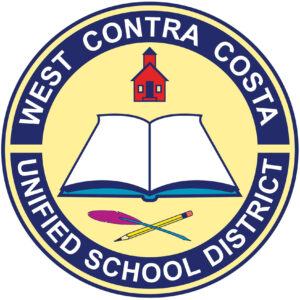 Three complaints have been filed last week with the West Contra Costa Unified School District alleging some schools failed to provide students with qualified teachers, according to Public Advocates, a nonprofit civil rights law firm.
Three complaints have been filed last week with the West Contra Costa Unified School District alleging some schools failed to provide students with qualified teachers, according to Public Advocates, a nonprofit civil rights law firm.
Attorneys have discovered numerous teacher vacancies at Stege Elementary School, Helms Middle School and John F. Kennedy High School, according to the complaints. There’s also been a pattern of filling vacancies with long-term substitutes, which attorneys say is illegal.
Although teacher shortages are a national problem, West Contra Costa is facing more vacancies than surrounding districts, said Karissa Provenza, a law fellow at Public Advocates. If the district can’t fill vacancies, officials need to “take advantage of the numerous lawful options for filling vacancies with emergency yearlong teachers instead of subs,” she said.
“Beyond the emergency fixes, the district and the state need to boldly invest in sustainable solutions to attract and retain teachers from within the community who reflect the diverse backgrounds of their students,” Provenza added.
Teacher vacancies are not only undermining quality instruction for students, attorneys said, but they’re placing burdens on educators in the district by relying on them to fill vacant classes and passing students along.
“Some (students) have gone several years in a row being assigned to a class without a permanent, qualified teacher,” said Jeremiah Romm, a complainant and educator who has taught at Helms Middle School for 16 years, in a statement. “It becomes difficult to convince students that this district cares about their success, and I don’t know if I believe that myself.”
Educator vacancies have kept Sam Cleare, a complainant and educator at Stege Elementary School for seven years, from collaborating with other teachers and focusing on instruction. Cleare said there have been times when 10 or more students are placed in classrooms for multiple days because of the lack of substitutes.
“Working over the contractual limit of students is unacceptable,” Cleare said. “It is impossible for students to learn or for me to teach with these conditions. I have had to speak with many parents and explain that their child hasn’t had a teacher for multiple years. These conversations leave me heartbroken. The inequitable learning opportunities are unacceptable.”
The school district was contacted for a response to this article. Please check back later for any updates.
Allen D. Payton contributed to this report.
Read More
ASALH – The Founders of Black History Month
From Association for the Study of African American Life and History (ASALH)
The story of Black History Month begins in Chicago during the summer of 1915. An alumnus of the University of Chicago with many friends in the city, Carter G. Woodson traveled from Washington, D.C. to participate in a national celebration of the fiftieth anniversary of emancipation sponsored by the state of Illinois. Thousands of African Americans travelled from across the country to see exhibits highlighting the progress their people had made since the destruction of slavery. Awarded a doctorate in Harvard three years earlier, Woodson joined the other exhibitors with a black history display.
Despite being held at the Coliseum, the site of the 1912 Republican convention, an overflow crowd of six to twelve thousand waited outside for their turn to view the exhibits. Inspired by the three-week celebration, Woodson decided to form an organization to promote the scientific study of black life and history before leaving town. On September 9th, Woodson met at the Wabash YMCA with A. L. Jackson and three others and formed the Association for the Study of Negro Life and History (ASNLH).
When Woodson established Negro History week in 1926, he realized the importance of providing a theme to focus the attention of the public. The intention has never been to dictate or limit the exploration of the Black experience, but to bring to the public’s attention important developments that merit emphasis.
He hoped that others would popularize the findings that he and other black intellectuals would publish in The Journal of Negro History, which he established in 1916. As early as 1920, Woodson urged black civic organizations to promote the achievements that researchers were uncovering. A graduate member of Omega Psi Phi, he urged his fraternity brothers to take up the work. In 1924, they responded with the creation of Negro History and Literature Week, which they renamed Negro Achievement Week. Their outreach was significant, but Woodson desired greater impact. As he told an audience of Hampton Institute students, “We are going back to that beautiful history, and it is going to inspire us to greater achievements.” In 1925, he decided that the Association had to shoulder the responsibility. Going forward it would both create and popularize knowledge about the black past. He sent out a press release announcing Negro History Week in February 1926.
Woodson chose February for reasons of tradition and reform. It is commonly said that Woodson selected February to encompass the birthdays of two great Americans who played a prominent role in shaping black history, namely Abraham Lincoln and Frederick Douglass, whose birthdays are the 12th and the 14th, respectively. More importantly, he chose them for reasons of tradition. Since Lincoln’s assassination in 1865, the black community, along with other Republicans, had been celebrating the fallen President’s birthday. And since the late 1890s, black communities across the country had been celebrating Douglass’. Well aware of the pre-existing celebrations, Woodson built Negro History Week around traditional days of commemorating the black past. He was asking the public to extend their study of black history, not to create a new tradition. In doing so, he increased his chances for success.
Yet Woodson was up to something more than building on tradition. Without saying so, he aimed to reform it from the study of two great men to a great race. Though he admired both men, Woodson had never been fond of the celebrations held in their honor. He railed against the “ignorant spellbinders” who addressed large, convivial gatherings and displayed their lack of knowledge about the men and their contributions to history. More importantly, Woodson believed that history was made by the people, not simply or primarily by great men. He envisioned the study and celebration of the Negro as a race, not simply as the producers of a great man. And Lincoln, however great, had not freed the slaves—the Union Army, including hundreds of thousands of black soldiers and sailors, had done that. Rather than focusing on two men, the black community, he believed, should focus on the countless black men and women who had contributed to the advance of human civilization.
From the beginning, Woodson was overwhelmed by the response to his call. Negro History Week appeared across the country in schools and before the public. The 1920s was the decade of the New Negro, a name given to the Post-War I generation because of its rising racial pride and consciousness. Urbanization and industrialization had brought over a million African Americans from the rural South into big cities of the nation. The expanding black middle class became participants in and consumers of black literature and culture. Black history clubs sprang up, teachers demanded materials to instruct their pupils, and progressive whites stepped and endorsed the efforts.
Woodson and the Association scrambled to meet the demand. They set a theme for the annual celebration, and provided study materials—pictures, lessons for teachers, plays for historical performances, and posters of important dates and people. Provisioned with a steady flow of knowledge, high schools in progressive communities formed Negro History Clubs. To serve the desire of history buffs to participate in the re-education of black folks and the nation, ASNLH formed branches that stretched from coast to coast. In 1937, at the urging of Mary McLeod Bethune, Woodson established the Negro History Bulletin, which focused on the annual theme. As black populations grew, mayors issued Negro History Week proclamations, and in cities like Syracuse progressive whites joined Negro History Week with National Brotherhood Week.
Like most ideas that resonate with the spirit of the times, Negro History Week proved to be more dynamic than Woodson or the Association could control. By the 1930s, Woodson complained about the intellectual charlatans, black and white, popping up everywhere seeking to take advantage of the public interest in black history. He warned teachers not to invite speakers who had less knowledge than the students themselves. Increasingly publishing houses that had previously ignored black topics and authors rushed to put books on the market and in the schools. Instant experts appeared everywhere, and non-scholarly works appeared from “mushroom presses.” In America, nothing popular escapes either commercialization or eventual trivialization, and so Woodson, the constant reformer, had his hands full in promoting celebrations worthy of the people who had made the history.
Well before his death in 1950, Woodson believed that the weekly celebrations—not the study or celebration of black history–would eventually come to an end. In fact, Woodson never viewed black history as a one-week affair. He pressed for schools to use Negro History Week to demonstrate what students learned all year. In the same vein, he established a black studies extension program to reach adults throughout the year. It was in this sense that blacks would learn of their past on a daily basis that he looked forward to the time when an annual celebration would no longer be necessary. Generations before Morgan Freeman and other advocates of all-year commemorations, Woodson believed that black history was too important to America and the world to be crammed into a limited time frame. He spoke of a shift from Negro History Week to Negro History Year.
In the 1940s, efforts began slowly within the black community to expand the study of black history in the schools and black history celebrations before the public. In the South, black teachers often taught Negro History as a supplement to United States history. One early beneficiary of the movement reported that his teacher would hide Woodson’s textbook beneath his desk to avoid drawing the wrath of the principal. During the Civil Rights Movement in the South, the Freedom Schools incorporated black history into the curriculum to advance social change. The Negro History movement was an intellectual insurgency that was part of every larger effort to transform race relations.
The 1960s had a dramatic effect on the study and celebration of black history. Before the decade was over, Negro History Week would be well on its way to becoming Black History Month. The shift to a month-long celebration began even before Dr. Woodson death. As early as 1940s, blacks in West Virginia, a state where Woodson often spoke, began to celebrate February as Negro History Month. In Chicago, a now forgotten cultural activist, Fredrick H. Hammaurabi, started celebrating Negro History Month in the mid-1960s. Having taken an African name in the 1930s, Hammaurabi used his cultural center, the House of Knowledge, to fuse African consciousness with the study of the black past. By the late 1960s, as young blacks on college campuses became increasingly conscious of links with Africa, Black History Month replaced Negro History Week at a quickening pace. Within the Association, younger intellectuals, part of the awakening, prodded Woodson’s organization to change with the times. They succeeded. In 1976, fifty years after the first celebration, the Association used its influence to institutionalize the shifts from a week to a month and from Negro history to black history. Since the mid-1970s, every American president, Democrat and Republican, has issued proclamations endorsing the Association’s annual theme.
What Carter G. Woodson would say about the continued celebrations is unknown, but he would smile on all honest efforts to make black history a field of serious study and provide the public with thoughtful celebrations.
Daryl Michael Scott, ASALH Former National President
Read more about the origins of Black History Month.
Learn about and watch the 2024 Black History Month Virtual Festival – ASALH.
Annual Themes
For those interested in the study of identity and ideology, an exploration of ASALH’s Black History themes is itself instructive. Over the years, the themes reflect changes in how people of African descent in the United States have viewed themselves, the influence of social movements on racial ideologies, and the aspirations of the Black community.
The changes notwithstanding, the list reveals an overarching continuity in ASALH – our dedication to exploring historical issues of importance to people of African descent and race relations in America.
2024 Theme
African American art is infused with African, Caribbean, and the Black American lived experiences. In the fields of visual and performing arts, literature, fashion, folklore, language, film, music, architecture, culinary and other forms of cultural expression, the African American influence has been paramount. African American artists have used art to preserve history and community memory as well as for empowerment. Artistic and cultural movements such as the New Negro, Black Arts, Black Renaissance, hip-hop and Afrofuturism, have been led by people of African descent and set the standard for popular trends around the world. In 2024, we examine the varied history and life of African American arts and artisans.
For centuries Western intellectuals denied or minimized the contributions of people of African descent to the arts as well as history, even as their artistry in many genres was mimicked and/or stolen. However, we can still see the unbroken chain of Black art production from antiquity to the present, from Egypt across Africa, from Europe to the New World. Prior to the American Revolution, enslaved Africans of the Lowcountry began their more than a 300-year tradition of making sweetgrass baskets, revealing their visual artistry via craft.
The suffering of those in bondage gave birth to the spirituals, the nation’s first contribution to music. Blues musicians such as Robert Johnson, McKinley ‘Muddy Waters’ Morganfield and Riley “BB” B. King created and nurtured a style of music that became the bedrock for gospel, soul, and other still popular (and evolving) forms of music. Black contributions to literature include works by poets like Phillis Wheatley, essays, autobiographies, and novels by writers such as David Walker and Maria Stewart. Black aesthetics have also been manifested through sculptors like Edmonia Lewis and painters like Henry O. Tanner.
In the 1920s and 30s, the rise of the Black Renaissance and New Negro Movement brought the Black Arts to an international stage. Members of the armed forces, such as James Reese Europe, and artists such as Langston Hughes, Josephine Baker and Lois Mailou Jones brought Black culture and Black American aesthetics internationally, and Black culture began its ascent to becoming a dominant cultural movement to the world. In addition to the Harlem Renaissance, today we recognize that cities like Los Angeles, Chicago, and New Orleans also were home to many Black artists.
The 1960s continued this thread through the cultural evolution known as the Black Arts Movement, where artists covered issues such as pride in one’s heritage and established art galleries and museum exhibitions to show their own work, as well as publications such as Black Art. This period brought us artists such as Alvin Ailey, Judith Jamison, Amiri Baraka, Nikki Giovanni and Sonia Sanchez. The movement would not have been as impactful without the influences from the broader Black world, especially the Negritude movement and the writings of Frantz Fanon.
In 1973, in the Bronx, New York Black musicians (i.e. DJ Kool Herc and Coke La Rock) started a new genre of music called hip-hop, which comprises five foundational elements (DJing, MCing, Graffiti, Break Dancing and Beat Boxing). Hip-hop performers also used technological equipment such as turntables, synthesizers, drum machines, and samplers to make their songs. Since then, hip-hop has continued to be a pivotal force in political, social, and cultural spaces and was a medium where issues such as racial violence in the inner city, sexism, economic disinvestment and others took the forefront.
The term Afrofuturism was used approximately 30 years ago in an effort to define cultural and artistic productions (music, literature, visual arts, etc.) that imagine a future for Black people without oppressive systems and examines how Black history and knowledge intersects with technology and science. Afrofuturist elements can be found in the music of Sun Ra, Rashan Roland Kirk, Janelle Monáe and Jimi Hendrix. Other examples include sci-fi writer Octavia Butler’s novels, Marvel film Black Panther, and artists such as British-Liberian painter Lina Iris Viktor, Kenyan-born sculptor Wangechi Mutu, and Caribbean writers and artists such as Nalo Hopkinson, and Grace Jones.
In celebrating the entire history of African Americans and the arts, the Association for the Study of African American Life and History (ASALH) puts into the national spotlight the richness of the past and present with an eye towards what the rest of the twenty-first century will bring. ASALH dedicates its 98th Annual Black History Theme to African Americans and the arts.
Read MoreMerced County man being held on $250,000 bail
By Jimmy Lee, PIO, Contra Costa County Office of the Sheriff
In the past few months, several homes in Central Contra Costa County were burglarized resulting in losses in excess of $300,000 of property that included jewelry, purses, and weapons.
Detectives from the Contra Costa County Office of the Sheriff investigating the burglaries identified a suspect. They obtained an arrest warrant for him, and search warrants for his residence and vehicles associated with the burglaries. Other law enforcement agencies in the Bay Area are also determining if the same suspect is connected to burglaries in their jurisdictions.
On January 25, 2024, as part of the continuing investigation, detectives found the suspect driving north on I-5 near Corning, California. They requested the Tehama County Sheriff’s Office to attempt a traffic stop on the vehicle, which did not yield and led them on a pursuit. The California Highway Patrol assisted during the pursuit. The vehicle eventually crashed, and the suspect fled on foot. He was subsequently located and arrested.
The suspect is identified as 26-year-old Gilberto Ramirez of Merced, CA. He is currently being held in Merced County jail on charges that include burglary, felony evasion and weapons violations. A juvenile who was in the vehicle was also taken into custody. She is not being identified.
According to the Merced County Sheriff’s Office, the 5-foot, 7-inch, 130 lb. Ramirez, who also uses the last name Cruz, is being held on $250,000 bail and was also charged with hit-and-run. The weapons violations include two counts of felon or addict in possession of a firearm and prohibited person owning or possessing ammunition.
Search warrants were served at various locations where property believed to be taken from the Contra Costa County burglaries was found. Detectives are identifying the property and working to return it to their rightful owners. The Contra Costa County Office of the Sheriff would like to thank the Tehama County Sheriff’s Office and CHP for their assistance in apprehending the suspect.
The investigation is ongoing. Anyone with any information on this case is asked to contact the Investigation Division at (925) 313-2600. For any tips, email: tips@so.cccounty.us or call (866) 846-3592 to leave an anonymous voice message.
Allen D. Payton contributed to this report.
Read MoreTicket prices range from $6,059 to $56,448 each on resale sites
By Alma Galvan, Regional Communications Manager, Better Business Bureau
San Francisco, CA – With the San Francisco 49ers securing a spot at this years big game, many are traveling to Las Vegas, Nevada to experience this event in person. The National Association of Ticket Brokers (NATB) and the Better Business Bureau (BBB) are teaming up to ensure fans, including passionate supporters of the San Francisco 49ers, have a winning game day experience. With the rise of digital ticketing and the increasing risk of scams, consumers are urged to be extra careful when purchasing tickets for one of the most anticipated sporting events of the year.
Securing tickets to popular sporting events and concerts has become more challenging, especially when many venues are only accepting digital tickets. This creates opportunities for scammers to take advantage of sporting fans. In the past year alone, the BBB received over 140 reports on BBB Scam Tracker related to ticket scams for various events.
To assist fans in making safe and informed decisions, the BBB and NATB offer the following tips for purchasing tickets to the big game:
- Purchase from the Venue: Whenever possible, buy tickets directly from the official venue.
- Verify the Source: Understand the differences between professional ticket brokers, ticket scalpers, and scammers.
- Use Trusted Vendors: Buy only from trusted vendors you know and trust. Avoid clicking through from emails or online ads.
- Understand the Refund Policy: Only purchase tickets from sellers that provide clear details about the transaction terms. Sellers should disclose seat locations and shipping details before purchase.
- Payment Protection: Always use a credit card for ticket purchases to have recourse if the tickets are not as promised. Avoid using debit cards, wire transfers, or cash transactions, which can be risky.
- Be Wary of Advertisements: Exercise caution when encountering online advertisements for cheap tickets.
- Verify Tickets if Unsure: If uncertain about the legitimacy of purchased tickets, visit the event venue’s customer service (“Will Call”) and verify the tickets’ authenticity.
As the countdown to the big game begins, the BBB is committed to raising awareness and educating fans, including loyal supporters of the San Francisco 49ers, on the smartest ways to buy tickets.
For more information or to report potential scams, please visit BBB.org and VerifiedTicketSource.com.
ABOUT BBB: The Better Business Bureau has empowered people to find businesses, brands, and charities they can trust for over 110 years. In 2022, people turned to BBB more than 250 million times for BBB Business Profiles on more than 5.3 million businesses and Charity Reports on about 12,000 charities, all available for free at BBB.org. The International Association of Better Business Bureaus is the umbrella organization for the local, independent BBBs in the United States, Canada, and Mexico.
Read More
Applications for its Community Health Care Program are due by January 31, 2024.
There’s a new option for people struggling to find affordable health care coverage, and the deadline to apply for this Kaiser Permanente program this year is fast approaching. Kaiser Permanente’s Community Health Care Program provides comprehensive, affordable health care coverage for qualified low-income adults and children in California who don’t have access to other public or private health coverage.
If eligible, you’ll receive comprehensive health coverage from Kaiser Permanente including preventive services, without paying a monthly premium. You also won’t need to pay copays or out-of-pocket costs for most care at Kaiser Permanente facilities.
“Even with the expansion of Medi-Cal to all low-income residents regardless of immigration status this year, there are still people who don’t have access to health care coverage,” said Yvette Radford, vice president, External and Community Affairs, Kaiser Permanente Northern California. “The Community Health Care Program is part of Kaiser Permanente’s commitment to make health care more affordable for everyone.”
Who is eligible for the Community Health Care Program?
The program is designed for applicants who meet the following criteria:
- total household income of 138% to 300% of the federal poverty level (Example: $20,122 to $43,740 for an individual and $41,401 to $90,000 for family of 4 in 2023)
- not eligible for any other health coverage, including Medi-Cal, Medicare, a job-based health plan, or Covered California
- must live in a Kaiser Permanente California service area
Individuals do not have to be U.S. citizens to qualify. Applications must be submitted by January 31, 2024.
How to apply
You can apply online at www.kp.org/chcp. Click the “apply now” button at the top of the website for a link to the application. If you need assistance, click the “get help” button for a list of community agencies that can provide help, or call Kaiser Permanente Member Services at 1-800-464-4000 (TTY 711).
Read MoreInclude non-transit transportation, environment, housing and economy strategy refinements
The Joint Metropolitan Transportation Commission (MTC) Planning Committee with the Association of Bay Area Governments (ABAG) Administrative Committee on Jan. 12, 2024 approved the revised Plan Bay Area 2050+ Draft Blueprint strategies and Growth Geographies. This action enables staff to further study the strategies’ performance in meeting critical regional goals for an affordable, connected, diverse, healthy and vibrant Bay Area for all. Staff are aiming for adoption of the Plan Bay Area 2050+ Final Blueprint in summer 2024.
Given Plan Bay Area 2050’s solid foundation of 35 strategies, the Draft Blueprint phase for Plan Bay Area 2050+ is focusing on making targeted refinements to select plan strategies. These refinements reflect Plan Bay Area 2050’s implementation progress, the post-pandemic planning context and insights gathered during engagement with the public and partners in summer 2023.
What is the Plan Bay Area 2050+ Blueprint?
The Plan Bay Area 2050+ Blueprint will integrate strategies across the four elements of the plan — the economy, the environment, housing and transportation — to create a more equitable and resilient future for all.
Beginning in summer 2023 and wrapping up in late 2024, staff will develop the Blueprint over two phases: the Draft Blueprint and the Final Blueprint. Given Plan Bay Area 2050’s solid foundation of 35 strategies, the Draft Blueprint phase for Plan Bay Area 2050+ will focus on making targeted refinements to select plan strategies.
What are Growth Geographies?
Priority Development Areas — Places nominated by local governments served by transit and planned for new homes and jobs at densities necessary to support effective transit service.
Priority Production Areas — Industrial areas of importance to the regional economy and local communities that support middle-wage jobs.
Transit-Rich Areas — Places near rail, ferry or frequent bus service that were not already identified as Priority Development Areas.
High-Resource Areas — State-identified places with well-resourced schools and access to jobs and open space.
Staff previously shared proposed Draft Blueprint strategy refinements in October and November 2023, detailing which of Plan Bay Area 2050’s 35 strategies were likely to see major, minor or no changes in Plan Bay Area 2050+. This month, the MTC and ABAG committees approved moving forward with revisions for further study and analysis, including:
- Non-transit transportation strategy refinementsfocused on prioritizing equity considerations, adapting to tighter fiscal constraints, promoting active transportation and safety, and expanding pricing strategies;
- Environment strategy refinementsfocused on further reducing greenhouse gas emissions and proactively adapting to climate change; and
- Housing and economy strategy refinementsfocused on addressing pressing challenges of housing affordability, homelessness and access to opportunity.
At this time the Draft Blueprint only includes a handful of modified transportation strategies, pending the development of a fiscally constrained Transportation Project List, which will integrate recommendations from the ongoing parallel Transit 2050+ effort. The complete suite of revised transportation strategies will be integrated as part of the Final Blueprint in summer 2024.
The Joint ABAG and MTC Committee also approved targeted updates to the Growth Geographies that were adopted as part of Plan Bay Area 2050. Growth Geographies are places that Plan Bay Area prioritizes for future homes, jobs, services and amenities and serve as a component of the plan’s housing and economy elements. Specifically, draft Growth Geographies for Plan Bay Area 2050+ will include five new Priority Development Areas (PDAs) and 16 modified existing PDAs nominated by local Bay Area jurisdictions; reflect up-to-date information on transit service, natural hazards and demographics; and integrate areas subject to MTC’s revised Transit Oriented Communities Policy.
The Draft Blueprint approval comes six months after MTC and ABAG kicked off the limited and focused update to Plan Bay Area 2050. In November 2023, staff shared progress-to-date with policymakers, including findings from the first round of engagement, core planning assumptions, the draft Regional Growth Forecast, a financial needs and revenue analyses and proposed strategy refinements.
The next round of public and partner organization engagement activities, which will inform the development of the Plan Bay Area 2050+ Final Blueprint, is planned to begin in spring 2024. MTC and the ABAG Executive Board are expected to approve Final Blueprint strategies in summer 2024.
Learn more about the Plan Bay Area 2050+ Draft Blueprint strategies and Growth Geographies. For additional technical resources, please visit the Plan Bay Area 2050+ Draft Blueprint Documents page on our website.
Read More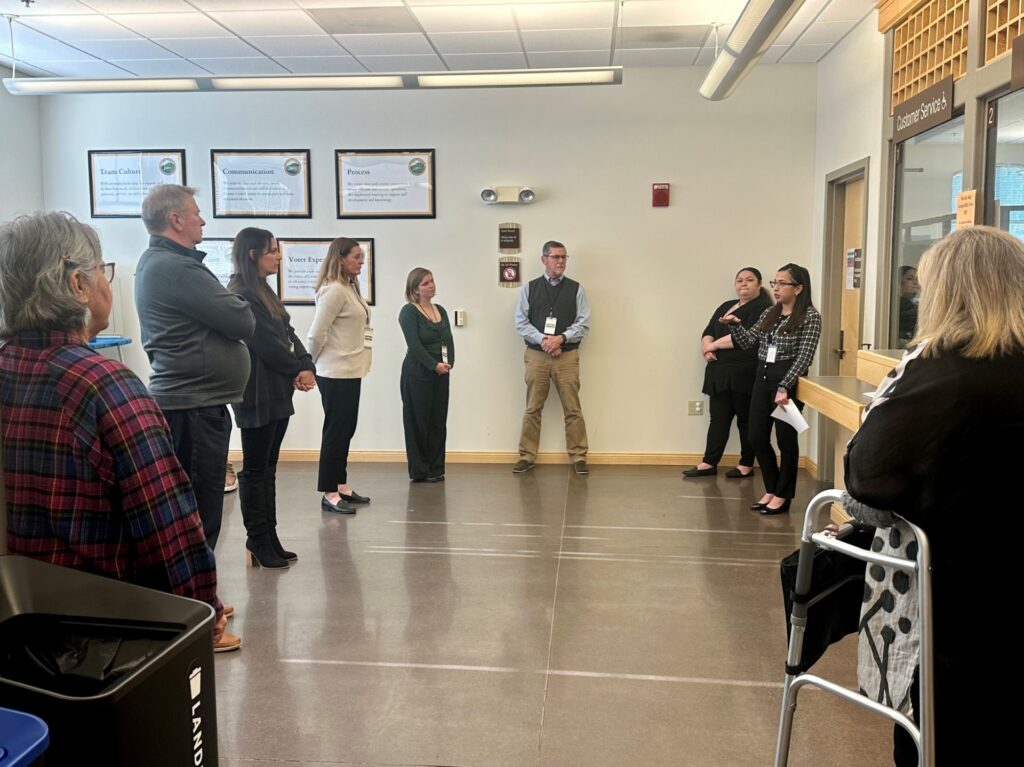
A group of Observers listen to a presentation by Contra Costa County Elections Staff. Photo: CCC Elections
“We’re an open book” – Registrar of Voters Kristin Connelly
By Dawn Kruger, Civic Outreach and Engagement Specialist, Contra Costa Clerk-Recorder-Elections Department
 Making good on its commitment to accountability and transparency, the Contra Costa County Clerk-Recorder-Elections Department today welcomes members of the public into its fourth class of the Contra Costa County Certified Election Observer (CEO) Program. The program is open to applicants from the public—anyone can apply to future cohorts. During this election cycle, ten CEOs will participate in a rigorous series of classes and tours at Elections Division headquarters.
Making good on its commitment to accountability and transparency, the Contra Costa County Clerk-Recorder-Elections Department today welcomes members of the public into its fourth class of the Contra Costa County Certified Election Observer (CEO) Program. The program is open to applicants from the public—anyone can apply to future cohorts. During this election cycle, ten CEOs will participate in a rigorous series of classes and tours at Elections Division headquarters.
“Our county is home to one of the safest, most secure and transparent election systems in the nation,” says Kristin Connelly, Contra Costa Registrar of Voters. “We’re not just saying that—we’ve been recognized by our peers. We ensure all residents can see how we work. That’s why the Certified Election Observer Program is so important—it offers an in-depth look at democracy from start to finish.”
Launched in 2022 and held in advance of every election, Contra Costa County’s CEO program won an Honorable Mention Award from the United States Election Assistance Commission. The program aims to open the elections process up to more county residents and help the community become well-versed in the many steps the county takes to ensure transparency and integrity.
This election cycle’s cohort will start with a comprehensive review of the voter registration process and an introduction to the Department’s leadership. Next, CEOs will participate in poll worker training classes. They will also get a facility tour featuring a detailed review of the public logic and accuracy testing process, where staff confirms that all voting equipment is functioning properly. On the day before the March 5 Presidential Primary Election, they will review the mail-in voting and ballot scanning process. This process consists of collecting ballot envelopes from official drop boxes and the postal service, verifying voters’ signatures against registration records, extracting and scanning ballots, and tabulating the vote.
On March 18, midway through the counting process, CEOs will witness Provisional Ballot processing and ballot review, including resolving damaged or ambiguous ballots. Then, they will watch the 1% manual tally, where officials conduct an audit by hand-counting a random sample of ballots to ensure that the tabulators have counted the votes correctly. Upon completion of the program, CEOs will receive a certificate of achievement at a Contra Costa County Board of Supervisors meeting in April.
“Our office has many opportunities for community participation,” says Dawn Kruger, Civic Outreach and Engagement Specialist. “You can become a poll worker, host a voter registration event, invite us to your organization for a presentation, learn more about how elections work by visiting our website, or engage with us on Social Media.”
Contra Costa County will host another cohort of CEOs for the fall Presidential General Election. Residents interested in receiving a presentation or observing the election process can email outreach@vote.cccounty.us. Those who wish to become a poll worker can visit contracostavote.gov. Voters can track the processing of their own ballot by signing up for California Ballottrax at california.ballottrax.net.
Read MoreBy Lindzie Laughridge, Community Engagement Officer, Brentwood Police Department
On Monday, Jan. 29, 2024, at approximately 7:40PM, Brentwood officers were dispatched to a call at the intersection of Balfour Road and Hudson Drive for a report of an adult male who was bleeding. When officers arrived, they discovered the adult male sustained a stab wound and officers immediately provided medical attention on scene. The male, who sustained significant injuries, was transported to a local hospital for further treatment.
Further investigation led officers to a residence associated with the male where contact was made with an adult female who resides at the residence. Based on the officer’s preliminary investigation, there was evidence the incident occurred at the residence.
The male, who is being treated, is expected to survive. There is no threat to public safety at this time, and no indication of any other involved individuals.
This investigation is ongoing, and we will not be releasing any further information at this time. If you have any additional information regarding this incident, you can call the Brentwood Police Department Dispatch line at 925-809-7911.
Read More







